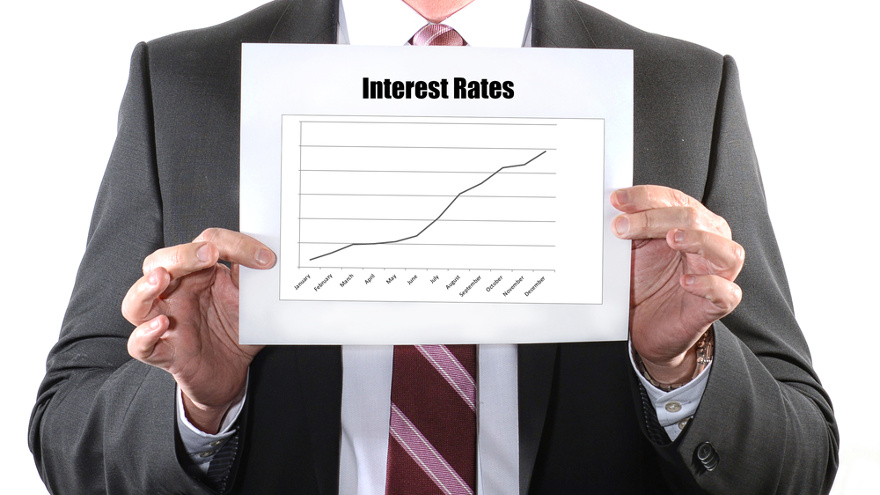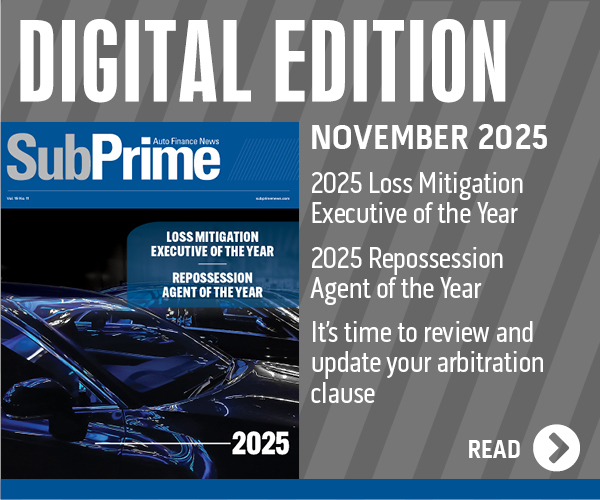Agora, Comerica, Cox & Edmunds on current state of auto finance, inflation & interest rates

By subscribing, you agree to receive communications from Auto Remarketing and our partners in accordance with our Privacy Policy. We may share your information with select partners and sponsors who may contact you about their products and services. You may unsubscribe at any time.
Experts from Agora Data, Comerica Bank, Cox Automotive and Edmunds gave a variety of insights about two of the top current economic trends that can impact auto financing — inflation and interest rates.
As expected by these companies, the Federal Reserve raised the federal funds rate by 50 basis points on Wednesday, marking the largest increase in the target rate in 22 years, according to Cox Automotive chief economist Jonathan Smoke.
Fed chair Jerome Powell began a Wednesday afternoon news conference with this message after policymakers voted unanimously to raise the rate.
“Before I go into the details of today’s meeting, I’d like to take this opportunity to speak directly to the American people. Inflation is much too high and we understand the hardship it is causing, and we’re moving expeditiously to bring it back down,” Powell said. “We have both the tools we need and the resolve it will take to restore price stability on behalf of American families and businesses.
“The economy and the country have been through a lot over the past two years and have proved resilient. It is essential that we bring inflation down if we are to have a sustained period of strong labor market conditions that benefit all,” he continued.
Smoke and Comerica Bank chief economist Bill Adams both said they expect the Fed to push the federal funds rate higher another 50 basis points during each of the next two gatherings of the Federal Open Market Committee scheduled for June and July.
Subscribe to Auto Remarketing to stay informed and stay ahead.
By subscribing, you agree to receive communications from Auto Remarketing and our partners in accordance with our Privacy Policy. We may share your information with select partners and sponsors who may contact you about their products and services. You may unsubscribe at any time.
Both Smoke and Adams also mentioned that the Fed also will start reducing the size of its bond holdings in June.
“The Fed is raising rates much faster than during the long expansion from 2009 to 2020, when they took three years to raise the fed funds rate from near zero to a peak of 2.25%-to-2.50%,” Adams said in a news installment of Comerica Insights. “Near term, monetary policy will restrain economic activity more than during the last hiking cycle, with effects most pronounced on sectors like housing, commercial real estate and durable goods spending.
“Chair Powell sees a ‘good chance’ that the Fed can engineer a ‘soft, or soft-ish’ landing from the current episode of overheating, meaning inflation would cool without a meaningful increase in unemployment,” Adams continued. “But Powell also said that the Fed is determined to slow inflation even if they are unable to avoid a recession, since a return to a strong economy with well-controlled inflation — like in the late 2010s — is only possible if inflation first comes under control.”
A ‘perfect storm’
Agora Data chief executive officer Steve Burke began a blog post pushed online before the Fed officially announced its decision with a history lesson.
“During 1980, inflation reached double digits, and the Fed funds rate soared to 20%. It was a good time to invest in CDs, but not for taking out a loan to purchase a home or an automobile,” Burke wrote. “Today, we’re dangerously close to double-digit inflation, and the Fed funds rate is only 50 basis points (one-half of 1%).
“Deja Vu. We’ve been here before,” he continued. “With the pandemic winding down and inflation soaring, it is not difficult to guess where it will go from here.”
Before highlighting how Agora Data can be of assistance to both dealerships and finance companies, Burke described what he called a “perfect storm” for originators. He broke the storm into three components.
“First: Dealers who do in-house financing and borrow money from traditional lenders will see their interest rates (cost of funds) increase quarterly for the next several years, reducing the dealers’ net profit,” Burke said.
“Second: Cash flow will significantly be affected,” he continued. “The inputs (consumer payments) will be stressed due to a higher amount financed. Higher payment amounts caused by increased used car prices will increase consumer payment defaults. Inflationary pressure on the subprime consumer and higher gas prices will also increase defaults. Dealers will pay a higher interest rate to their lenders, the cost of inventory will rise, and ancillary product costs will rise.”
“Third: The combinations of high inflation and the possibility of a recession could put dealers in a bind as they did in the past,” Burke went on to say. “The failure of lenders to recommit loaning them money, changing loan agreements to protect themselves, or exiting the non-prime market entirely may negatively affect the ability of a dealer to survive.”
Potential consumer impact
Smoke, as well as Edmunds executive director of insights Jessica Caldwell, tackled the task of explaining how the Fed’s latest move as well as potential other actions could impact consumers’ ability to secure credit for vehicle financing.
In his “Smoke on Cars” blog, the Cox chief economist pointed out the differences between the housing and auto markets in connection with the current financing landscape.
“The mortgage market has been far more reactive than the auto loan market. Prior to today’s changes, the average 30-year mortgage rate had increased by 230 (basis points) since the end of December,” he wrote.
“Auto loan rates have also moved higher but not by as much. Average new auto loan rates have moved up about 70 (basis points) year to date. Average used auto loan rates have increased about 75 (basis points),” Smoke continued.
“With rates expected to increase by well more than a point beyond the increases observed so far, financing costs will quickly make financing big-ticket purchases more challenging. This is exactly what the Fed wants to see. As demand for homes, cars, and other durables declines in response to declining affordability, the rate of price increases should slow as well,” Smoke went on to say.
Over at Edmunds, analysts determined that the average rate for a used vehicle financed at a franchised dealership in April was 8.0% with an average term of 70.7 months, computing to an average monthly payment of $543. On the new-car side, Edmunds determined those averages to be 4.7% for 70.2 months, landing at a monthly payment of $648.
“The Fed’s latest interest rate hike could play out in entirely different ways for the new- and used-car markets,” Caldwell said. “Historically, interest rate hikes haven’t affected the new car market with any major significance because auto manufacturers are known to offer many loan subsidies. Even though this is the biggest rate hike we’ve seen in two decades, the continued inventory shortage coupled with strong demand likely means the impact of rising interest rates will be minimal on this market, as the new vehicle buyer base of higher income shoppers won’t feel the pain as much as the average consumer.
“We can expect a more significant ripple effect on the used side, where more buyers pay market rates that are generally not subsidized. With used-car prices already at record highs, the interest rate hike will only make this market more expensive. Some buyers will be forced to sit out entirely or buy an older vehicle to keep payments within an affordable range,” Caldwell continued.
“For shoppers looking for a vehicle in the near term, Edmunds recommends considering all vehicle types and being mindful of all costs involved in the vehicle purchase process, including interest payments, in addition to monthly payments and other financing terms,” she went on to say.


